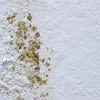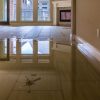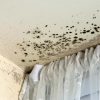Mold can develop anywhere with sufficient warmth, humidity, oxygen, moisture, and darkness. This can be dangerous, especially to individuals who are sensitive to them, as it can cause allergic reactions like itchiness and shortness of breath.
Fortunately, knowing where to check for mold can help you prevent it from growing and contaminating your home.
Here are a few common locations:
Kitchen
Examine your sink and its surrounding areas. This includes any of your sponges, rags, and dirty dishes you may have left unwashed. Then, proceed to inspect directly under it for one of the most common sources for mold — leaking pipes.
Go through your appliances one by one. Excess grease and food droppings in or around your microwave, oven, or on your stove tops are prime candidates for mold growth. Make sure to deep clean your refrigerator every few months and toss out old or expired food. Don’t forget to empty out water dispensers and drip trays as well.
Bathroom
Mold thrives in wet environments. This means that your shower or bathtub are the most prone to accumulating mold. Take the time to rinse and wipe down nearby objects such as shampoo and conditioner bottles, loofahs, and your shower curtain, too. Maximize ventilation options like exhaust fans and windows to keep humidity levels low.
Bedroom
Insomnia, snoring, and excessive daytime sleepiness have been linked to mold in the household. This gives you all the more reason to inspect your room’s heating and air conditioning vents — both dark areas that may house mold when left unattended.
You may also find mold on your mattress, especially if its underside doesn’t get space to breath. Investing in a mold-resistant mattress or a slatted bed frame is often a good solution to this.
Living Room
Mold is most noticeable on your curtains and couches when a musty smell seeps out of the fabric and upholstery. Check these areas regularly. In addition, make sure you avoid over-watering any indoor plants and drain your plant saucers of any excess water to lessen the moisture in the room.
General Areas
Be wary of any signs of potential mold on your ceilings and walls, and behind tiles. While they may not be immediately visible to the naked eye, condensation on these surfaces or peeling wallpapers are usually bad signs.
You can also perform your own test on the area to double check any suspicions you may have. In order to do this, simply place a doormat on the part of the floor you want to examine or tape a doormat to your chosen patch of the wall.
Then, leave it alone and return to look it over in one or two days. Your home is at risk of developing mold if its bottom side is damp and you notice moisture on the area you placed it.
Maintaining a Mold-Free Home
Sometimes, despite all the practices you follow, an area of your home may be overlooked, exposed to spores, and contaminated. Prevent any health risks and contact experts in mold removal in Brandon to get your home mold-free once more. Get in touch with us today.







